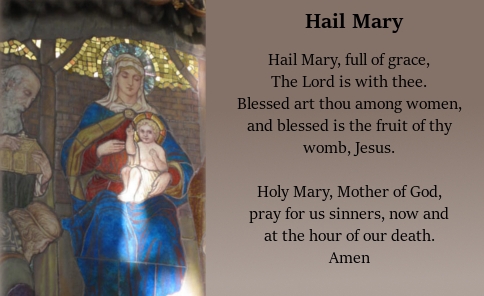The Hail Mary is one of the most well-known Catholic prayers, often recited during rosary prayers or as part of daily devotions.
Origin of the Hail Mary
The Hail Mary has its roots in the Bible, with the first part of the prayer coming directly from the Gospel of Luke. The angel Gabriel greets Mary with the words “Hail, full of grace, the Lord is with thee” (Luke 1:28).
The Power of Intercession
The second part of the Hail Mary, which asks for Mary’s intercession, is a powerful reminder of the connection between believers and the saints in Heaven. Catholics believe that Mary, as the Mother of God, has a special role in interceding for us before her Son.
Reflecting on Christ’s Life
The final part of the Hail Mary, where we ask Mary to pray for us “now and at the hour of our death,” reminds us of the central mystery of our faith: the life, death, and resurrection of Jesus Christ. By asking for Mary’s prayers at the moment of our death, we acknowledge our need for her assistance in facing the final judgment.
The Hail Mary in Practice
While the Hail Mary is a powerful prayer on its own, it is often recited within the context of the rosary, a traditional Catholic devotion that focuses on the life of Christ. As Catholics meditate on the mysteries of the rosary, they also ask for Mary’s intercession through the repetitive recitation of the Hail Mary.
In conclusion, the Hail Mary is a simple yet profound prayer that reminds us of our connection to Mary, the saints, and ultimately to Jesus Christ. By unpacking the power of the Hail Mary, Catholics can deepen their understanding of the faith and draw closer to God through the intercession of Mary.

